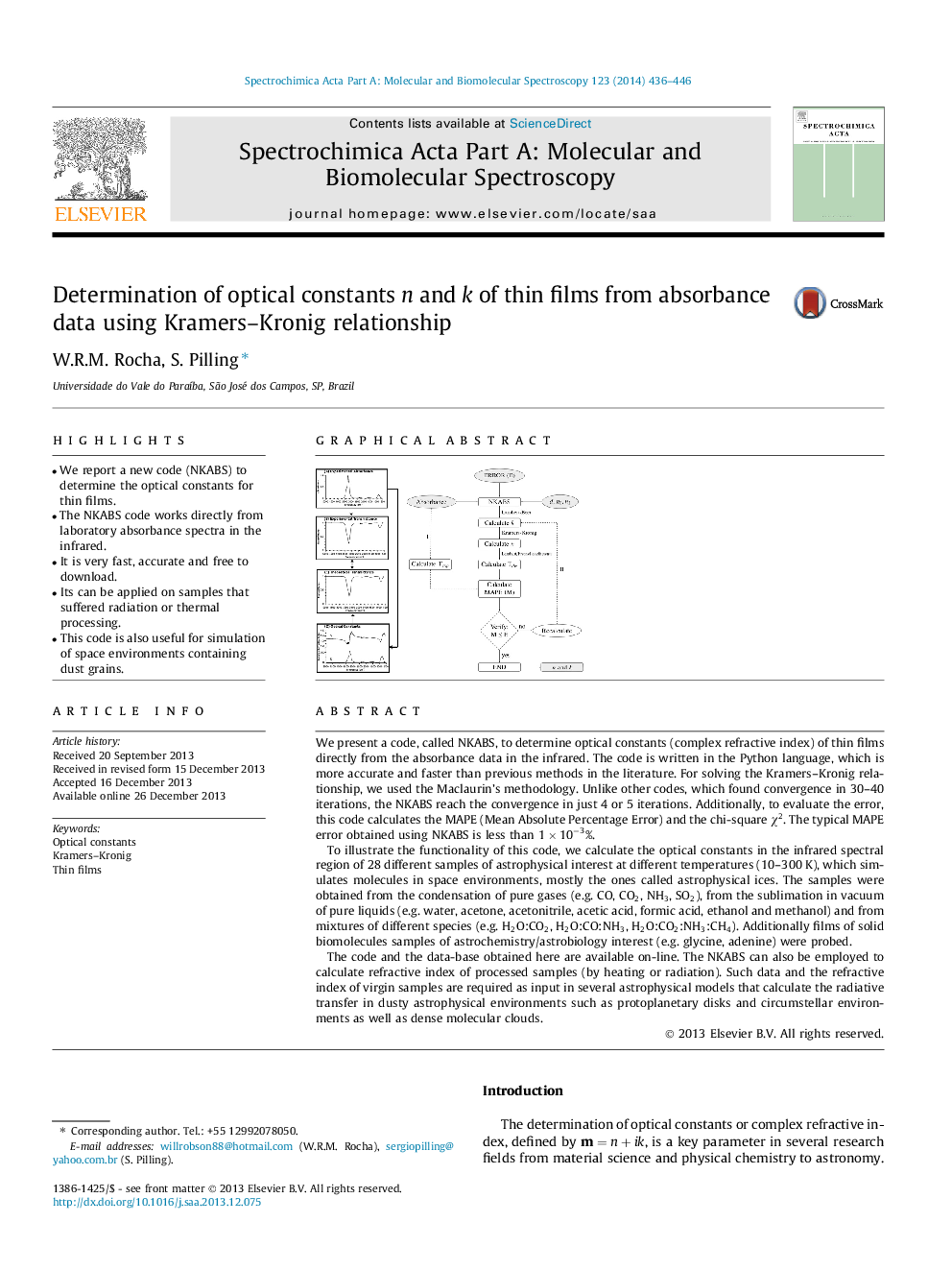| Article ID | Journal | Published Year | Pages | File Type |
|---|---|---|---|---|
| 1232866 | Spectrochimica Acta Part A: Molecular and Biomolecular Spectroscopy | 2014 | 11 Pages |
•We report a new code (NKABS) to determine the optical constants for thin films.•The NKABS code works directly from laboratory absorbance spectra in the infrared.•It is very fast, accurate and free to download.•Its can be applied on samples that suffered radiation or thermal processing.•This code is also useful for simulation of space environments containing dust grains.
We present a code, called NKABS, to determine optical constants (complex refractive index) of thin films directly from the absorbance data in the infrared. The code is written in the Python language, which is more accurate and faster than previous methods in the literature. For solving the Kramers–Kronig relationship, we used the Maclaurin’s methodology. Unlike other codes, which found convergence in 30–40 iterations, the NKABS reach the convergence in just 4 or 5 iterations. Additionally, to evaluate the error, this code calculates the MAPE (Mean Absolute Percentage Error) and the chi-square χ2χ2. The typical MAPE error obtained using NKABS is less than 1 × 10−3%.To illustrate the functionality of this code, we calculate the optical constants in the infrared spectral region of 28 different samples of astrophysical interest at different temperatures (10–300 K), which simulates molecules in space environments, mostly the ones called astrophysical ices. The samples were obtained from the condensation of pure gases (e.g. CO, CO2CO2, NH3NH3, SO2SO2), from the sublimation in vacuum of pure liquids (e.g. water, acetone, acetonitrile, acetic acid, formic acid, ethanol and methanol) and from mixtures of different species (e.g. H2H2O:CO2CO2, H2H2O:CO:NH3NH3, H2H2O:CO2CO2:NH3NH3:CH4CH4). Additionally films of solid biomolecules samples of astrochemistry/astrobiology interest (e.g. glycine, adenine) were probed.The code and the data-base obtained here are available on-line. The NKABS can also be employed to calculate refractive index of processed samples (by heating or radiation). Such data and the refractive index of virgin samples are required as input in several astrophysical models that calculate the radiative transfer in dusty astrophysical environments such as protoplanetary disks and circumstellar environments as well as dense molecular clouds.
Graphical abstractFigure optionsDownload full-size imageDownload as PowerPoint slide
